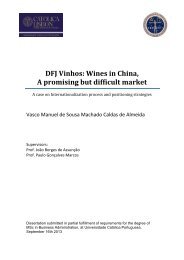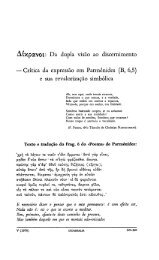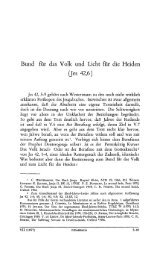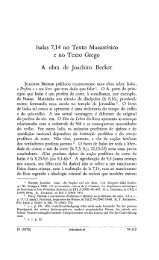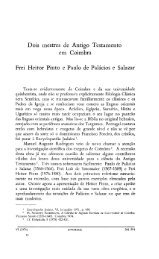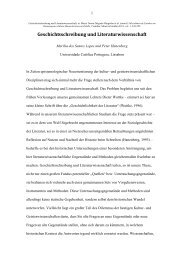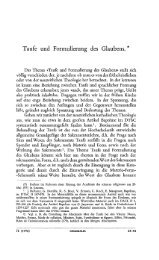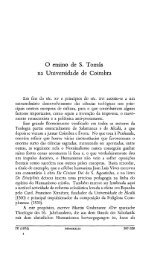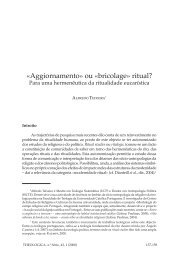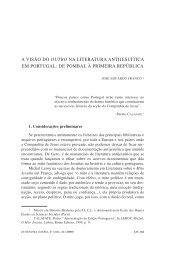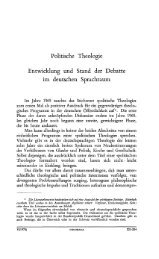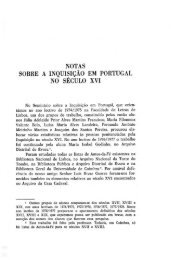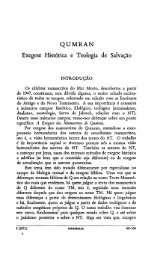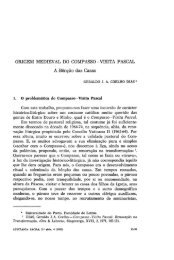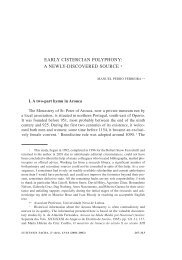Dynamics of stomatal adaptation in rose leaves exposed to long ...
Dynamics of stomatal adaptation in rose leaves exposed to long ...
Dynamics of stomatal adaptation in rose leaves exposed to long ...
You also want an ePaper? Increase the reach of your titles
YUMPU automatically turns print PDFs into web optimized ePapers that Google loves.
<strong>Dynamics</strong> <strong>of</strong> <strong>s<strong>to</strong>matal</strong> <strong>adaptation</strong> <strong>in</strong> <strong>rose</strong> <strong>leaves</strong><br />
<strong>exposed</strong> <strong>to</strong> <strong>long</strong>-term high relative air humidity<br />
Dimitrios Fanourakis, Susana Carvalho, Ep Heuvel<strong>in</strong>k<br />
Horticultural Supply Cha<strong>in</strong>s
Contents<br />
General Introduction<br />
Aims and hypotheses<br />
3 climate chamber experiments:<br />
- role <strong>of</strong> RH and roots’ signals <strong>in</strong> fully developed <strong>leaves</strong> (Exp.1)<br />
- role <strong>of</strong> RH dur<strong>in</strong>g leaf development (Exp. 2)<br />
- effect <strong>of</strong> RH on <strong>s<strong>to</strong>matal</strong> <strong>in</strong>itiation and development (Exp. 3)<br />
F<strong>in</strong>al conclusions<br />
Horticultural Supply Cha<strong>in</strong>s
Long-term high relative air humidity (RH>85%) dur<strong>in</strong>g<br />
cultivation downgrades keep<strong>in</strong>g quality <strong>in</strong> cut flowers<br />
Environment<br />
dur<strong>in</strong>g cultivation<br />
Genotype<br />
Physiology + Ana<strong>to</strong>my<br />
Horticultural Supply Cha<strong>in</strong>s<br />
Potential<br />
Post-harvest Conditions<br />
Vase Life<br />
Light <strong>in</strong>tensity, light quality, CO 2 fertilization, air humidity, water stress<br />
Xylem, <strong>s<strong>to</strong>matal</strong>, cuticle properties, hyd<strong>rose</strong>nsitivity <strong>of</strong> Ψ, flower open<strong>in</strong>g
Not only obta<strong>in</strong>, but susta<strong>in</strong> quality<br />
High RH is common <strong>in</strong> w<strong>in</strong>ter months <strong>in</strong> Northern<br />
Europe <strong>in</strong> greenhouse cultivation<br />
Closed greenhouse (closed ventilation w<strong>in</strong>dows)<br />
high RH levels<br />
High RH dur<strong>in</strong>g cultivation <strong>in</strong>creased water loss<br />
dur<strong>in</strong>g post-harvest (<strong>s<strong>to</strong>matal</strong> malfunction)<br />
poor keep<strong>in</strong>g quality<br />
Cultivar dependent quality decrease<br />
Manipulate humidity<br />
dur<strong>in</strong>g or after leaf development: compensate?<br />
Horticultural Supply Cha<strong>in</strong>s<br />
OR<br />
?
Species<br />
S<strong>to</strong>matal <strong>adaptation</strong> (or NOT) <strong>to</strong> new RH environment<br />
Phaseolus vulgaris 1<br />
Tradescantia virg<strong>in</strong>iana 2<br />
Rosa hybrida 3<br />
<strong>in</strong> fully developed <strong>leaves</strong><br />
Moderate → High<br />
RH<br />
√<br />
(7 days)<br />
√<br />
(4 days)<br />
×<br />
(21 days)<br />
Horticultural Supply Cha<strong>in</strong>s<br />
High → Moderate<br />
RH<br />
√<br />
(7 days)<br />
×<br />
(6 days)<br />
×<br />
(21 days)<br />
• Species dependent<br />
• Certa<strong>in</strong> amount <strong>of</strong> ABA is required dur<strong>in</strong>g and after leaf development<br />
for functional s<strong>to</strong>mata 2<br />
1 Pospisilova (1996); 2 Rezaei Nejad and Van Meeteren (2006); 3 Mortensen and Gislerød (2000)<br />
2<br />
ABA
Hypotheses<br />
Humidity level<br />
Root (hormonal & hydraulic) signals<br />
after leaf development<br />
do NOT affect <strong>s<strong>to</strong>matal</strong> functionality<br />
Horticultural Supply Cha<strong>in</strong>s
Materials & Methods<br />
Three climate chamber experiments ALL WITH:<br />
cv: Prophyta (sensitive <strong>to</strong> high RH)<br />
2 RH: High RH (90%); Moderate RH (60%)<br />
Light: 300 20 mol m -2 s -1 , 18 h/d<br />
19˚C day/night, ambient CO 2<br />
Horticultural Supply Cha<strong>in</strong>s
Role <strong>of</strong> RH and root signals’ <strong>in</strong> fully developed <strong>leaves</strong><br />
(Exp. 1)<br />
Fully grown plants (flower stage 2):<br />
transferred <strong>to</strong> humidity other than growth<br />
(60%→90%; 90% →60%)<br />
cut <strong>rose</strong>s, placed <strong>in</strong> vases <strong>in</strong> evaluation room<br />
(for 60% RH only)<br />
(20˚C, RH: 50%, 10-12 µmol m -2 s -1 , 12 h/d)<br />
Horticultural Supply Cha<strong>in</strong>s<br />
Stage 2<br />
ABA
Measurements (Exp. 1)<br />
S<strong>to</strong>matal responses <strong>to</strong> desiccation were followed every 2d<br />
- new humidity: 14 replicates, 1 leaf/ plant<br />
- cut <strong>rose</strong>s: 8 replicates; 1 leaf/ stem<br />
Rehydrated term<strong>in</strong>al (detached) leaflets<br />
T: 21 o C, RH: 50±3 % (1.47 kPa VPD),& 50 µmol m -2 s -1<br />
Transpiration rate measured gravimetrically<br />
Horticultural Supply Cha<strong>in</strong>s
Transpiration rate<br />
(mmolm -2 s -1 )<br />
S<strong>to</strong>matal responses <strong>to</strong> desiccation<br />
1.6<br />
1.2<br />
0.8<br />
0.4<br />
0<br />
100<br />
80<br />
60<br />
40<br />
RWC (%)<br />
20<br />
60<br />
90%<br />
0<br />
Transpiration rate<br />
(mmolm -2 s -1 )<br />
1.6<br />
1.2<br />
0.8<br />
0.4<br />
Horticultural Supply Cha<strong>in</strong>s<br />
0<br />
0 50 100 150 200 250<br />
time (m<strong>in</strong>)<br />
Relative Water Content=[(FW-DW)/SFW<br />
Content=[(FW DW)/SFW-DW)]*100 DW)]*100<br />
• Iwan<strong>of</strong>f effect<br />
• High RH affects speed and degree <strong>of</strong> s<strong>to</strong>mata closure<br />
• End value can be mislead<strong>in</strong>g<br />
60%<br />
90%
RWC 4h (%)<br />
RWC 4h after desiccation (role <strong>of</strong> RH and <strong>of</strong><br />
roots)<br />
100<br />
80<br />
60<br />
40<br />
20<br />
0<br />
Role <strong>of</strong> RH Role <strong>of</strong> roots<br />
60%-->90%<br />
90%-->60%<br />
0 4 8 12 16<br />
Time at new environment (days)<br />
• No <strong>s<strong>to</strong>matal</strong> <strong>adaptation</strong> after 14d <strong>in</strong> new RH environment<br />
•Vase Vase life: s<strong>to</strong>mata stay functional even after 14d without<br />
root signals (hormonal & hydraulic)<br />
RWC 4h (%)<br />
100<br />
80<br />
60<br />
40<br />
20<br />
Horticultural Supply Cha<strong>in</strong>s<br />
0<br />
0 4 8 12 16<br />
Time after root removal (days)<br />
60%
New research questions<br />
Is the high RH effect on <strong>s<strong>to</strong>matal</strong> behaviour<br />
gradual dur<strong>in</strong>g leaf development?<br />
Are the non fully developed <strong>leaves</strong> able <strong>to</strong><br />
adapt <strong>to</strong> a new RH environment? To which<br />
extent?<br />
Horticultural Supply Cha<strong>in</strong>s
Role <strong>of</strong> RH dur<strong>in</strong>g leaf development (Exp. 2)<br />
Five weeks after bud break (1 st leaf≈20% f<strong>in</strong>al length),<br />
plants transferred <strong>to</strong>:<br />
• New RH environment<br />
(60%→90%; 90%→60%)<br />
• treated with 30µm ABA twice a day<br />
(1 st leaf only) 5 th :95%<br />
Horticultural Supply Cha<strong>in</strong>s<br />
4 th :84%<br />
2 nd :46%<br />
1 st :20%<br />
20%<br />
3 rd :60%
Measurements (Exp. 2)<br />
Leaf expansion was followed daily (measur<strong>in</strong>g leaf length <strong>of</strong> <strong>to</strong>p 5 <strong>leaves</strong>)<br />
Fully developed leaf (100% FLE)→ leaf length is constant for 3<br />
consecutive days<br />
criterion = 100%FLE and not time <strong>in</strong> the new humidity (Exp.1)<br />
S<strong>to</strong>matal responses <strong>to</strong> desiccation <strong>in</strong> fully expanded <strong>leaves</strong><br />
(3 repetitions, n>18)<br />
Similarly <strong>to</strong> Exp. 1:<br />
Rehydrated term<strong>in</strong>al (detached) leaflets<br />
RH :50±3 %, T:21 o C (1.47 kPa VPD),& 50 µmol m -2 s -1<br />
Transpiration rate measured gravimetrically<br />
Horticultural Supply Cha<strong>in</strong>s
Role <strong>of</strong> RH dur<strong>in</strong>g leaf development (90%→60%)<br />
RW C 4h (% )<br />
80<br />
70<br />
60<br />
50<br />
40<br />
30<br />
20<br />
10<br />
10 30 50 70 90 110<br />
FLE (%) at transfer<br />
• 27% FLE behave as control moderate RH; 10% step <strong>in</strong> FLE:<br />
different behavior (even >90% FLE before transfer is better than than<br />
high RH control)<br />
• not complete, but partial <strong>adaptation</strong><br />
• ABA application <strong>in</strong>duced very active <strong>s<strong>to</strong>matal</strong> function<strong>in</strong>g<br />
Horticultural Supply Cha<strong>in</strong>s<br />
90%-->60%RH<br />
90%RH<br />
60%RH<br />
90%RH+ABA
Role <strong>of</strong> RH dur<strong>in</strong>g leaf development (60%→90%)<br />
RW C 4h (% )<br />
80<br />
70<br />
60<br />
50<br />
40<br />
30<br />
20<br />
10<br />
10 30 50 70 90 110<br />
FLE (%) at transfer<br />
• High RH dur<strong>in</strong>g the last part <strong>of</strong> leaf expansion is detrimental<br />
irrespective the FLE at the time <strong>of</strong> transfer (FLE90%RH<br />
90%RH<br />
60%RH<br />
60%RH+ABA
New research questions<br />
Is the gradual effect <strong>of</strong> moderate RH due <strong>to</strong><br />
gradual <strong>s<strong>to</strong>matal</strong> <strong>in</strong>itiation dur<strong>in</strong>g leaf<br />
expansion?<br />
Does the different humidity effect come<br />
from different <strong>s<strong>to</strong>matal</strong> <strong>in</strong>itiation/<br />
appearance?<br />
Horticultural Supply Cha<strong>in</strong>s
S<strong>to</strong>matal <strong>in</strong>itiation and development (Exp. 3)<br />
35, 50, 65, 100% FLE (leaf order 1)<br />
(4 leaflets/ stage and humidity level)<br />
Paired sampl<strong>in</strong>g<br />
(always control was 100% lateral leaflet)<br />
Measurements:<br />
Silicon rubber impression technique<br />
1 Sampl<strong>in</strong>g area 1x1 cm<br />
S<strong>to</strong>matal density<br />
1 Poole et al (1996)<br />
FLE<br />
LA<br />
Horticultural Supply Cha<strong>in</strong>s<br />
35%<br />
7%<br />
50%<br />
19%<br />
65%<br />
38%<br />
100%<br />
100%
S<strong>to</strong>matal density<br />
(s<strong>to</strong>mata mm -2 )<br />
S<strong>to</strong>matal <strong>in</strong>itiation dur<strong>in</strong>g leaf expansion<br />
120<br />
100<br />
80<br />
60<br />
40<br />
20<br />
0<br />
60%<br />
90%<br />
0 20 40 60 80 100<br />
FLE (%)<br />
S<strong>to</strong>matal number over f<strong>in</strong>al<br />
(%)<br />
absolute s<strong>to</strong>mata number = density × area<br />
• S<strong>to</strong>matal <strong>in</strong>itiation pattern was not affected by humidity <strong>of</strong> growth growth<br />
• At 65% FLE (or 40%LA) over 95% <strong>of</strong> s<strong>to</strong>mata are present<br />
120<br />
100<br />
80<br />
60<br />
40<br />
20<br />
Horticultural Supply Cha<strong>in</strong>s<br />
0<br />
60%<br />
90%<br />
0 20 40 60 80 100<br />
FLE (%)
Conclusions<br />
S<strong>to</strong>matal physiology is determ<strong>in</strong>ed dur<strong>in</strong>g leaf development<br />
In fully developed <strong>leaves</strong> the RH level or presence <strong>of</strong> roots signals’<br />
are NOT important<br />
When last part <strong>of</strong> leaf development = moderate RH:<br />
the earlier the switch (i.e. lower FLE) the better<br />
(partial <strong>adaptation</strong>; different potential)<br />
When last part <strong>of</strong> leaf development = high RH<br />
the time <strong>of</strong> the switch (FLE
THANK YOU FOR ATTENTION!<br />
Nikolaos Fotiou, Abel Kebede, Nikolaos Matkaris<br />
Horticultural Supply Cha<strong>in</strong>s
Horticultural Supply Cha<strong>in</strong>s<br />
Coxdale (2000)



